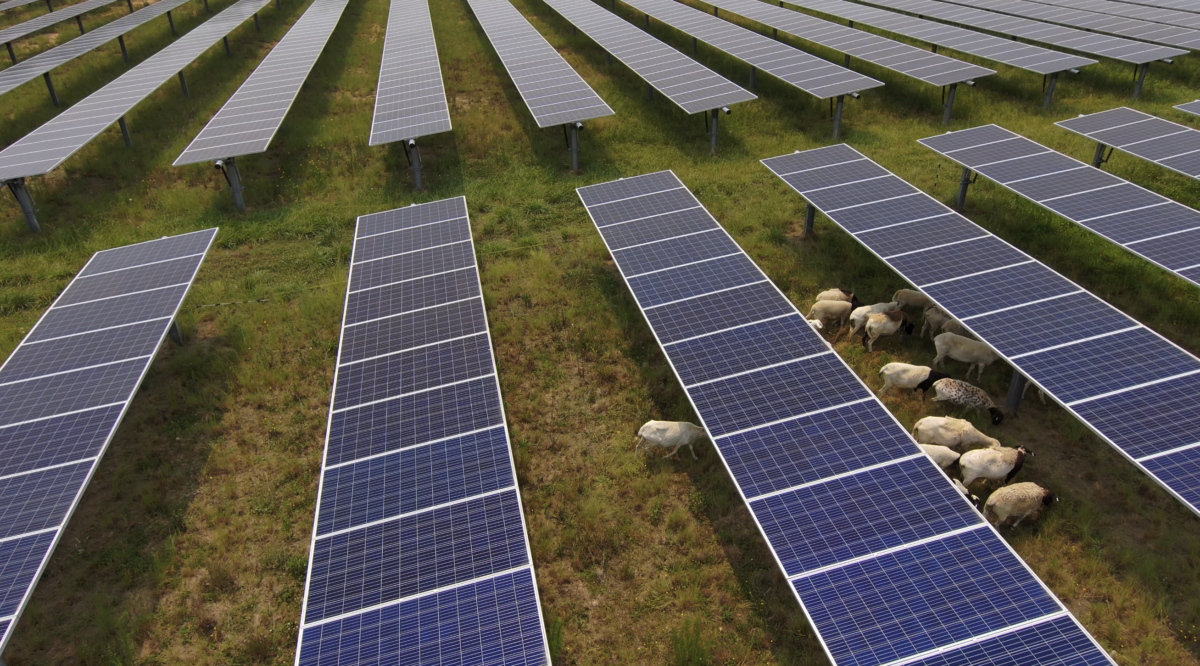U.S. Senators Tammy Baldwin (D-WI) and Chuck Grassley (R-IA) introduced the Protecting Future Farmland Act, legislation that aims to provide a framework for protecting agrivoltaic farmland. The bill amends the Farm Security and Rural Investment Act of 2002 and aims to modify the Rural Energy for America Program (REAP).
Agrivoltaics, defined by the bill authors as “a system under which solar energy production and agricultural production, including crop or animal production, occurs in an integrated manner on the same piece of land through the duration of a solar project.” According to research firm Allied Analytics, agrivoltaics can represent a win-win for farmers and solar developers. It forecasts the agrivoltaic market can reach $9.3 billion by 2031, growing at an annual rate of over 10%.
Researchers at Oregon State University found that solar and agricultural co-location could provide 20% of the total electricity generation in the United States, and that an area the size of Maryland (13,000 square miles) would be needed. While that is only 1% of current U.S. farmland, the goal of the Farmland Act to help support farmers who plan to deploy solar on their land. At a global scale, it is estimated that 1% of all farmland could produce the world’s energy needs if converted to solar PV.
While these figures are appealing to clean energy advocates, stewards of farmland are concerned because of the strong appeal of turning vast acres of flat land in sunny regions into agrivoltaic systems. Recent modeling by the American Farmland Trust (AFT) estimates that 83% of new solar deployment is likely to take place on farmland if policy steps are not taken.
The bipartisan legislation aims to ensure that federal investment in rural energy projects prioritizes both land stewardship and responsible deployment of renewable energy. Additionally, the senators are concerned about the condition of the land after a solar lease ends.
AFT is in support of the bill, stating that the bill would help ensure the current renewable energy buildout benefits rural communities, protects farmland and strengthens farm viability.
“Solar deployment can be an opportunity to strengthen farm viability and keep land in farming, but to do this right will require action,” said Tim Fink, policy director of American Farmland Trust. “We applaud Senator Baldwin and Senator Grassley’s Protecting our Future Farmland Act for introducing a bill with common sense, timely, and necessary policies that will empower USDA to advance a smarter solar buildout.”
Specifically the Protecting Future Farmland Act intends to achieve the following:
- Prioritize federal assistance to those renewable energy projects (through existing Rural Energy for America Program) that have in place soil, water, and vegetation management and conservation plans.
- Collect data on conversion of farmland to solar energy and directs the U.S. Department of Agriculture (USDA) to deliver a report to Congress on the benefits and impacts of solar energy development on agricultural land.
- Authorize the National Resources Conservation Service to develop best practices for protection of soil health and productivity during the siting, construction, operation, and decommissioning of solar energy systems on agricultural land.
- Authorize the National Resources Conservation Service to provide technical assistance to farmers growing crops or managing grazing below or in tandem with solar energy systems.
- Define agrivoltaic systems and authorize USDA to conduct a study on agrivoltaic systems including compatibility and risk-benefit analyses.
The bill was introduced into Congress on September 26, 2023 and may be considered by committee next. In addition to the AFT, the bill has been endorsed by American Soybean Association, the Nature Conservancy, Wisconsin Farm Bureau Federation, Wisconsin Farmers Union, and Wisconsin Soybean Growers.
This content is protected by copyright and may not be reused. If you want to cooperate with us and would like to reuse some of our content, please contact: editors@pv-magazine.com.









I am glad that some of our “leaders” are recognizing that farmers and rangers can utilize THEIR land to both produce affordable food at Kroger as well as affordable electricity for our homes. And, at the same time, not be tempted to sell their land for the next subdivision because they can no longer afford to farm.
Now, speaking of subdivisions and end of life solar farms. Which would be easier to return to “traditional” farming? the agri-solar farm or the subdivision?